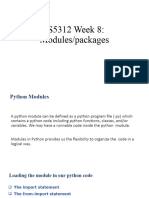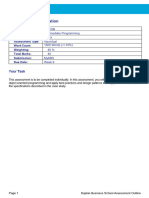0% found this document useful (0 votes)
5 views23 pagesAdvanced Topics
The document explains the concepts of modules and packages in Python, highlighting their structure, usage, and benefits such as reusability and clean code. It also introduces APIs, detailing their purpose, types (like RESTful APIs), and how to make requests and build your own API using Flask. Best practices for naming and organizing modules and packages are also provided.
Uploaded by
ooafonrinwoCopyright
© © All Rights Reserved
We take content rights seriously. If you suspect this is your content, claim it here.
Available Formats
Download as PPTX, PDF, TXT or read online on Scribd
0% found this document useful (0 votes)
5 views23 pagesAdvanced Topics
The document explains the concepts of modules and packages in Python, highlighting their structure, usage, and benefits such as reusability and clean code. It also introduces APIs, detailing their purpose, types (like RESTful APIs), and how to make requests and build your own API using Flask. Best practices for naming and organizing modules and packages are also provided.
Uploaded by
ooafonrinwoCopyright
© © All Rights Reserved
We take content rights seriously. If you suspect this is your content, claim it here.
Available Formats
Download as PPTX, PDF, TXT or read online on Scribd
/ 23
































































































